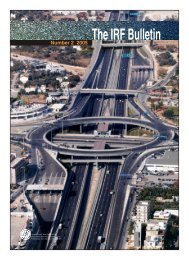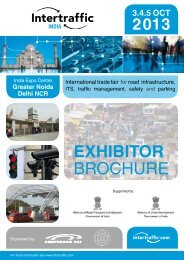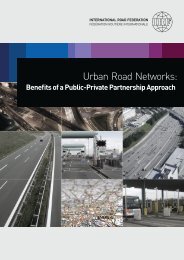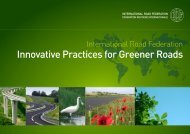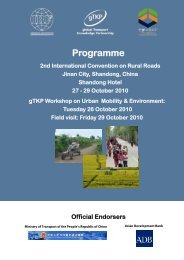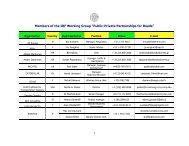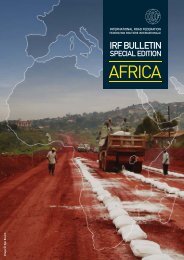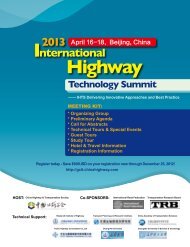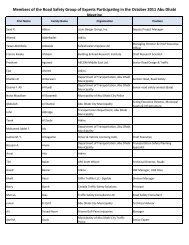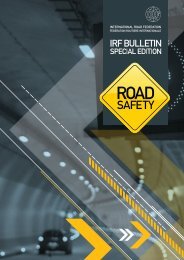TRANSPORT
TRANSPORT
TRANSPORT
- No tags were found...
You also want an ePaper? Increase the reach of your titles
YUMPU automatically turns print PDFs into web optimized ePapers that Google loves.
SOCIO-ECONOMIC BENEFITS<br />
Formula for Sustainability<br />
It is common experience amongst donors operating in<br />
the transport sector in developing countries – and more<br />
particularly in the road sector – that sustainability in the<br />
form of adequate routine and periodic maintenance is<br />
often difficult to achieve; even though this represents “bad<br />
economics”, through the risk of rapid loss of the original<br />
investment.<br />
Vehicle bridge: Las Cruces – San Fernando<br />
new or rehabilitated schools, and easier access to secondary<br />
schools outside the community.<br />
Institutional Change: Capacity and Maintenance<br />
At community level, the evaluation found that the<br />
training and community involvement associated with<br />
the programme increased local capacity, not only for the<br />
technical aspects of construction and maintenance but<br />
also with respect to organisation and interaction between<br />
the municipalities and other actors. Interestingly, the<br />
quantitative analysis revealed a significantly higher inflow<br />
of other development projects to PAST communities. The<br />
evaluation concludes that the combination of improved<br />
access for NGOs and other development actors, coupled<br />
with the increased capability of the communities, has<br />
helped bring about this change.<br />
At municipal level, the evaluation found that PAST<br />
support in providing training and equipment for technical<br />
officers, social promoters, administrators and planners has<br />
been comprehensive and effective. This contributed to a<br />
continued dialogue with the project committees and has<br />
resulted in generally satisfactory levels of maintenance.<br />
The experience of PAST in Nicaragua has shown that it is<br />
possible to address this challenge. According to the findings<br />
of the evaluation, the key factors in this respect are the longterm<br />
involvement and organisation of the communities<br />
and local governments concerned, coupled with capacity<br />
building and the demonstration of appropriate technical<br />
solutions. Short and long term planning, as well as raising<br />
awareness and resultant pressure from the populations<br />
who stand to lose out on benefits if the original investments<br />
are not maintained, were also highlighted as important. In<br />
this context, the experience of developing, implementing<br />
and maintaining PAST projects has both created capacity<br />
and deepened the relationship between communities and<br />
municipal governments; to the extent that officials are<br />
now more engaged in dialogue with communities, and<br />
communities are more articulate regarding their needs<br />
and responsibilities. This facilitates the task of both parties<br />
in fulfilling maintenance responsibilities - thus enhancing<br />
sustainability and the probability that the stream of positive<br />
benefits identified by the evaluation will continue in the<br />
longer term.<br />
The full “Impact Evaluation of Danida Support to Rural Transport<br />
Infrastructure in Nicaragua”, including more information on methods<br />
and results, can be downloaded from www.evaluation.dk.<br />
Many Birds with One Stone:<br />
Enhancing Social Protection<br />
through Rural Roads<br />
Development<br />
Asfaw Kidanu<br />
Chief Technical Advisor, Kenya Roads Project,<br />
International Labour Organization<br />
Meeting of Road Committee on the Los Canales –<br />
La Manzana Road<br />
It has long been established that investment on<br />
infrastructure development can stimulate growth by<br />
injecting much needed cash into the local economy<br />
08<br />
| IRF BULLETIN SPECIAL EDITION: RURAL <strong>TRANSPORT</strong>, VOLUME-2



